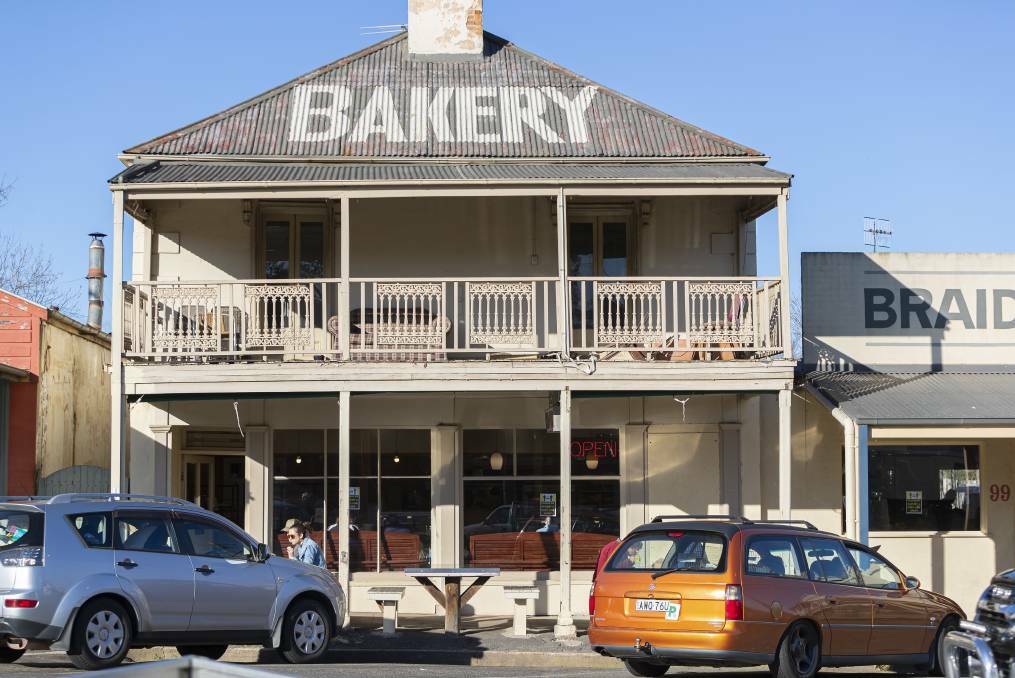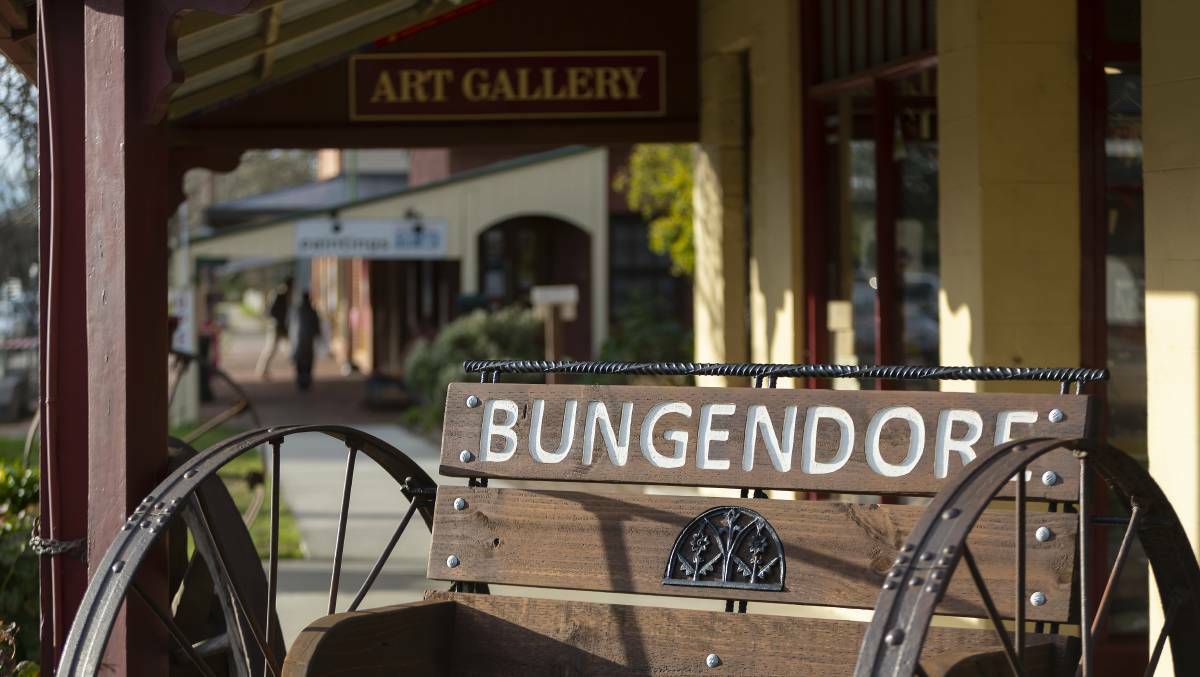Every year, on our annual family pilgrimage to the New South Wales Snowy Mountains from Sydney, I remember staring out the window on the stretch between Goulburn and Canberra, gazing across the fascinating expanse of Lake George – often devoid of water – and wondering what might be over the other side. My father was always hellbent for a new record driving time, so there was no time to peek over that tantalising turbine-topped hill.
Create a free account to read this article
$0/
(min cost $0)
or signup to continue reading
Years later, dawdling down the South Coast, I saw the turn-off for Braidwood, and realised this road would lead to the other side of that mysterious region. I followed my nose to the Queanbeyan-Palerang region, encompassing a large swathe of stunning countryside between the South Coast and Canberra, just south-west of Goulburn down to just north of the spectacular Deua and Tallaganda National Parks – and I never looked back.
It’s a common tale in the Queanbeyan-Palerang region. Chat to locals and you’ll find so many of them started somewhere else; dropped in for a visit and stayed for 30 years so far, or ‘accidentally’ bought a house and a business and made a life here amongst the carpet-smooth paddocks, emerald-green pastures and rolling hills of the land around Bungendore, or in the more rugged, majestic rocky outcrops and red-earthed beauty around Braidwood.
For those who do manage to leave after a visit, the incredible growth of the towns, blossoming artisan communities and gourmet food culture make for a surprise and delight when they return. The wineries around Lake George, for example (Contentious Character, Lark Hill Winery, Affleck vineyard, Norton Road Wines), are enough to fill a day by themselves, either as a taster to the wider region, or a wonderful addition to a Canberra sojourn.
Some of the region’s drawcards, on the other hand, remain thankfully unchanged. The historic sights of the main towns, as well as the dozens of unnamed but early heritage cottages, churches and halls built from the region’s bluestone and sandstone, sit as quiet, timeless beauties. You can even be so lucky as to stay the night in some of the more lovely examples, such as in the 1860s Georgian ‘Old Stone House’ in Bungendore, or the luxurious Mona Farm near Braidwood. Of course, there’s always the Georgian-era Braidwood Hotel, where Mick Jagger entertained locals regularly in 1969 while in the area filming Ned Kelly.
Even older – by a few millennia – are the many natural wonders in the area. Down at the Googong Foreshores, near the 62-metre dam wall, the recreation area and wildlife refuge offers glorious, peaceful moments in the sunshine; 16 kilometres further toward Burra, you can view the limestone formation at the London Bridge Arch. Around Captains Flat, the national parks offer camping, biking and bushwalking for absolute miles.
For this writer, though, with my own daughter now peering out the car window as we eat up the kilometres as we road-trip whenever we can, it’s the neverending creativity, artisanship and slow-crafting attitude of the region that bring us back time and again. Here are some of our very favourite places to visit – more than enough to make up a long weekend’s visit, and certainly reason enough to slow down and stay awhile – who needs a road-trip in record time, after all?
Braidwood
The town centre on Wallace Street is unmistakable, with its Georgian storefronts, stone church and many cottages containing artists’ wares and metalsmiths. William Verdon is a well-known and very original silversmith and jeweller tucked away in his timber cottage just off the main drag – it’s worth a visit especially to enjoy the log fire and view his sculptural displays. Over the other side of town, Wendy Lees produces handmade jewellery, fashion and homewares from often upcycled metal and glass at her workshop and store V&M (Vetro e Metallo). Housed in a 1950s woolstore and industrial garage, the recycled and repurposed copper in the showroom is a real highlight.
Even on the main street, it is worth looking behind corners and down the laneways. Set well back from the passing parade is a gorgeous little piece of Japan in the form of Mingei Studio. A small cottage set in a rather breathtaking garden houses a traditional shop full of indigo-dyed clothes and quite minimalist, Japanese-style ceramics. Mary Taguchi holds court here, having lived in Japan part-time over 40 years and more, and brings with her a deep and abiding love for the simplicity and love of form that makes up the Japanese craft movement of the 1920s named ‘mingei’. She now helps visitors revive these beautiful arts, from workshops teaching traditional indigo dyeing through to ‘visible’ mending of clothes, encouraging repurposing and revivifying old textiles.
On the other side of Wallace Street, almost hidden away if it weren’t for the sunlit courtyard and ever-eager queue of hungry punters, you’ll find village favourite Dojo Bread. Originally set up by an aikido master who brought his martial-arts discipline to the art of making bread, the bakery has been taken over by his once-assistant Mark Barrington. Mark has brought his own passion for fermentation and ‘slow’ fermenting to the bakery, also selling his products under his alter ego ‘the Mad Fermenter’.
“I love fermenting. I even ferment things like croissants,” he says. “I make a range of sauerkraut and kimchi, which we sell, and also the cortado which is popular, from central America, from El Salvador and Mexico. I’m guessing European migrants went over there, settled there and brought the concept of fermenting cabbage and sauerkraut. And then they added local ingredients, such as pineapple juice. It’s delicious – I hope you try it!”
Foodie culture and eco-farming and food practices do often intermingle in this region, and visitors can stay and learn all about it at Wynlen House, a property and enterprise describing itself as an ‘artisan village farm’. Run as a permaculture farm, Wynlen House offers open days as well as farm tours and tastings to visitors, all to be booked in advance. On-farm classes include healthy hen-keeping and how to raise small farm animals, through to bio-intensive polyculture – this last class can also currently be learned online, although you would be missing out on seeing an innovative and inspiring property. South of town, in Reidsdale, you can also visit the cider-makers at Sully’s Cider, to see traditional recipes and preserving done with passion.
To plan your visit to Braidwood, keep in mind that Saturday is generally market day, with the farmers’ market generally arriving every first and third Saturday of the month, and the park markets every fourth Saturday. These markets are when you can catch up with local makers without their own shopfronts, to pick up handmade jams and jellies, hand-decorated cakes and cupcakes, preserves and pickles, plus antiques and bric-a-brac, all under the spreading arms of the park’s ancient trees. You can also pick up honey and bees’ wax products from famed local beekeepers Bees R Us.

Bungendore
A very pleasant 50 kilometres’ drive west takes you to this smaller and utterly charming town. Being so close to Canberra, Bungendore gets its fair share of day trippers, but there is certainly enough here to linger in one of the region’s overnight stays. Breakfast at The Gathering café, or over at the Wood Work Gallery’s café, is equally enjoyable and worth rising early or staying the night.
The commercial centre of town is neatly arranged within a walk of everywhere you need to be, so you can park your car, relax and set off on foot. The Wood Work Gallery is easily spotted with its lime-green artwork-cum-playground piece spiralling its way out the front. Inside, it’s a dazzling display of timberwork, with everything from pepper grinders to furniture suites made from the finest of wood, turned to perfection. Don’t miss the upstairs gallery section, sparsely fitted out so you can stop and soak in the ambience.
Across the road, the Big Green Cup café and emporium has fabulously out-there designs to browse, and the right mix of coffees, meals and ice-cream to linger over. Further down, Village Emporium and Antiques is a veritable treasure trove of goods and not your ‘usual’ antiquing stop, offering a Sydney Ferry pier, vintage kitchen goods, and a gigantic kewpie doll presiding over the backyard.
In the next block over, the art and artisan scene is very sophisticated, with the clean lines of Suki and Hugh Gallery. Here, you’ll find art from both local and imported artists, beautifully presented by a local family. Then, there is the delightful X Gallery – the life’s work of resident silversmith Xanthe Gay, who came to visit and somehow ended up buying and restoring this wonderful and historic building.
“The artists’ community is very active,” she says, “and I’ve watched it grow a lot over the 22 years that I’ve been here. Like myself, I’ve seen lots of people relocating here from Sydney or Canberra. After all it’s still close to Sydney, close to the coast, close to the snow. Everyone’s really supportive of each other, and I just love it here. What can I say?”

Take me there
Drive: Bungendore is a mere 20 minutes’ drive from the eastern edge of Canberra, and Braidwood is a half-hour beyond that. From Sydney, you can take the scenic route over the stunning coastal drive through Wollongong and on through Nowra, then turn inland for equally stunning landscapes on the Nerriga Road into Braidwood. There is a short stint on well-kept dirt road, and the journey will take you 3 ½ hours all up. There is also a beautiful drive from Batemans Bay. Otherwise, you can take the more direct route via the M5 and Goulburn, for a three-hour drive to Bungendore.
Explore more: Visit treasuretrail.com.au for information on what to do, where to go, what’s on and where to stay in the Queanbeyan-Palerang region.




